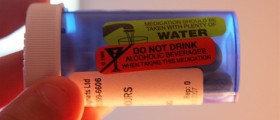
Benefits and side effects of niacin
Niacin, another name for vitamin B3, is a dietary supplement, that can be obtained without a medical prescription. The reason why people use it lies in the fact that it is helpful in improving cholesterol levels.. It has the ability to increase the levels of HDL and decrease the levels of LDL, but besides this, it also helps in the prevention of atherosclerosis, heart attack, and pellagra, which is a medical term for vitamin B3 deficiency.
As for the side effects, those milder in nature that occur most frequently include flushing (visible on the face, but also on the trunk), headaches, nausea, diarrhea, vomiting. Severe side effects, which rarely occur, are those that indicate some problems of the liver, high blood sugar, stomach ulcer, hypertension, arrhythmia and an allergic reaction.
Niacin flush and the main facts
Flushing is certainly the most frequent side effect of products that contain niacin. It can be recognized rather easily, because besides redness of the skin, tingling and heat are present as well, although sometimes, itching, chills, rapid heartbeat, sweating and dizziness may also occur, due to the fact that the blood vessels have expanded. However, there is a way this problem can be avoided, and that is to begin with a lower dosage when first starting to use this vitamin, and then to slowly increase the dosage. If Aspirin or some NSAID is taken before niacin, flushing may be avoided, but this is something that should be checked with the doctor, since some people might experience problems due to such combinations.

















Your thoughts on this
Loading...